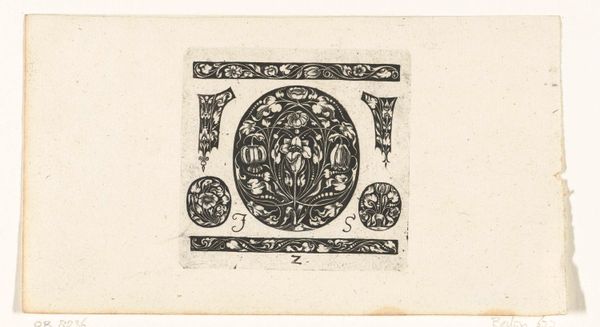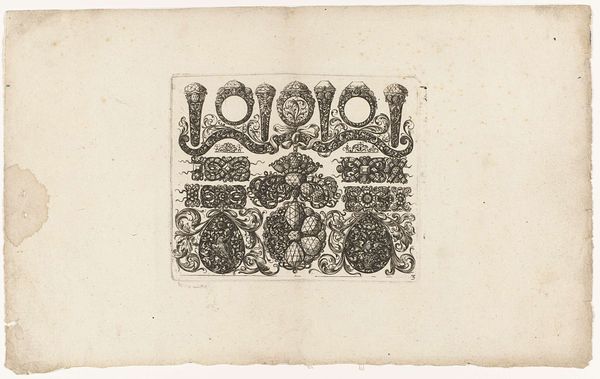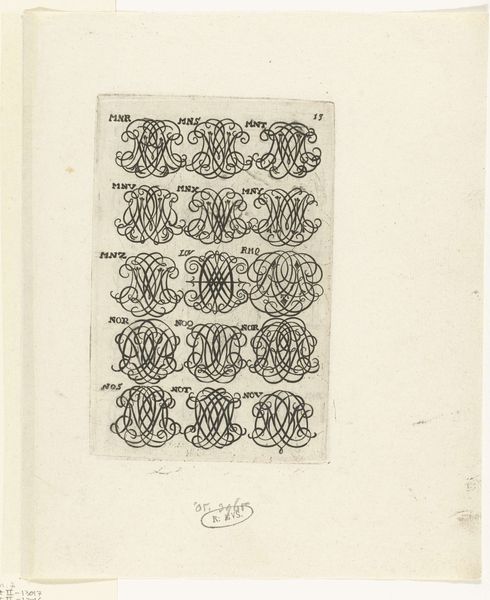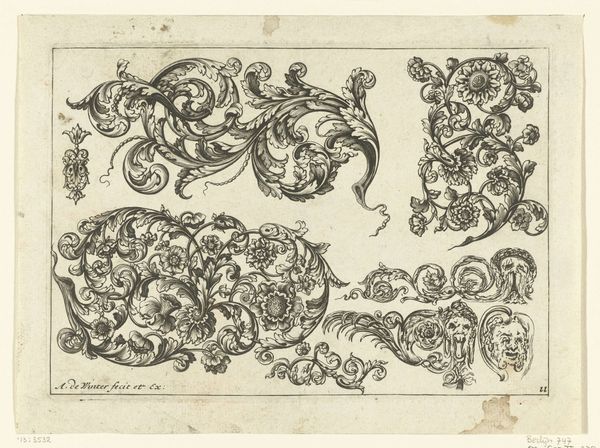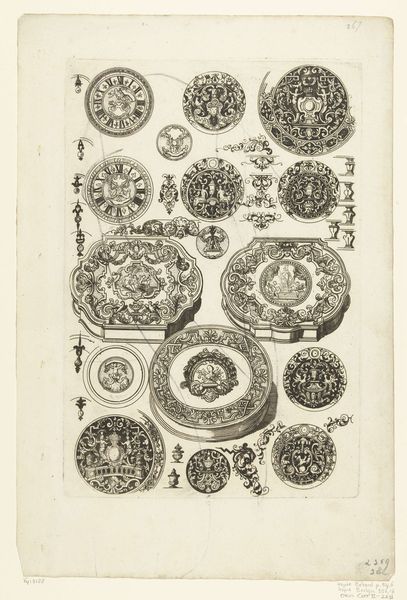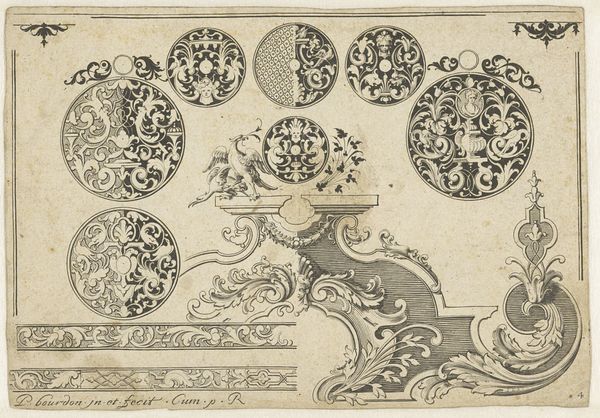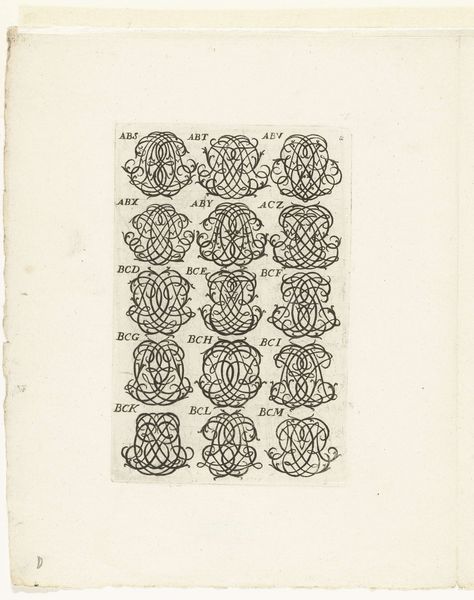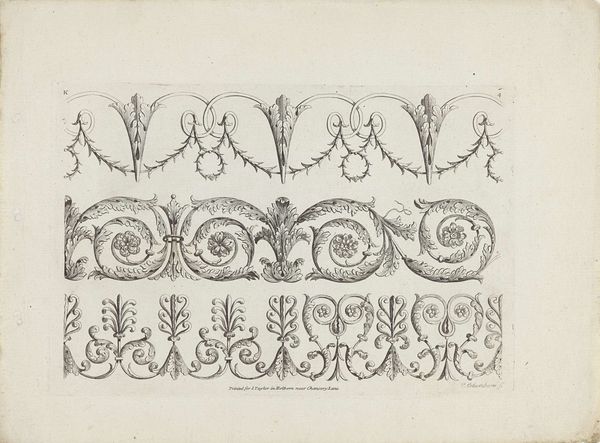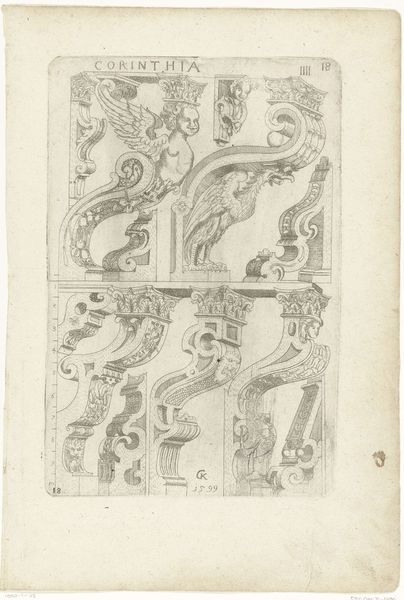
drawing, ink, engraving
#
drawing
#
baroque
#
pen drawing
#
ink
#
line
#
decorative-art
#
engraving
Dimensions: height 134 mm, width 164 mm
Copyright: Rijks Museum: Open Domain
Curator: Isn’t it fascinating how a single image can house a multitude of miniature worlds? The drawing before us, "Tien Motieven," likely created between 1690 and 1700 by Anthonie de Winter, does just that. Look closely – it's a parade of decorative motifs meticulously rendered with pen and ink. What’s your immediate take on it? Editor: Chaotic elegance. At first glance, it feels busy, almost overwhelming, but the longer you look, the more those swirls and grotesque faces seem to find a strange harmony. It’s like a garden overgrown, but in the most delightful way. Curator: Precisely! De Winter has given us, I believe, more than mere decoration; he’s playing with the idea of recurring symbolic gestures, wouldn't you agree? See how the acanthus leaves unfurl with an almost relentless energy? Then, interspersed are these human and animal masks, each unique, yet contributing to a familiar baroque style. Editor: They're like mischievous spirits popping up from a floral dimension. I wonder about those faces. Some seem inspired by classical masks from theater, others more like bizarre chimeras dreamed up after one too many goblets of wine. It makes you wonder what was in De Winter's head when he was sketching this out! What about the intention for art like this? Was it intended to evoke, incite, maybe satirize something about the baroque period itself? Curator: It might be fair to suggest these kinds of images function as inspiration. Perhaps for plasterwork, ornamental metal, and printmaking in a later medium. Editor: True! Think of the pattern books. De Winter would know that his penmanship may be the blueprint for the whole. So, the details that feel “extra” to us are incredibly functional when reinterpreted at scale. But tell me, Curator, looking at all these repetitions, do you think this type of rendering sacrifices the sacred aura we sometimes associate with great artwork? Or is its practical nature also a form of grace? Curator: That's a very insightful question. Personally, I see a charm in this function. Here, repetition acts more like meditation—like tracing your finger across a prayer bead; in it is a mantra or familiar song. These recurring elements anchor and embolden it as one complete composition—the faces especially ground it in the terrestrial as we are reminded of mankind and its creations! The human mind loves the beauty and safety in recurrence; that's why this image resonates to this day. Editor: Yes, now when I stare long enough at these masks I feel that humanity peering back. Each imperfect, all wonderfully strange. I think it’s time I stop resisting the chaos and start finding the echoes in its patterns!
Comments
No comments
Be the first to comment and join the conversation on the ultimate creative platform.
